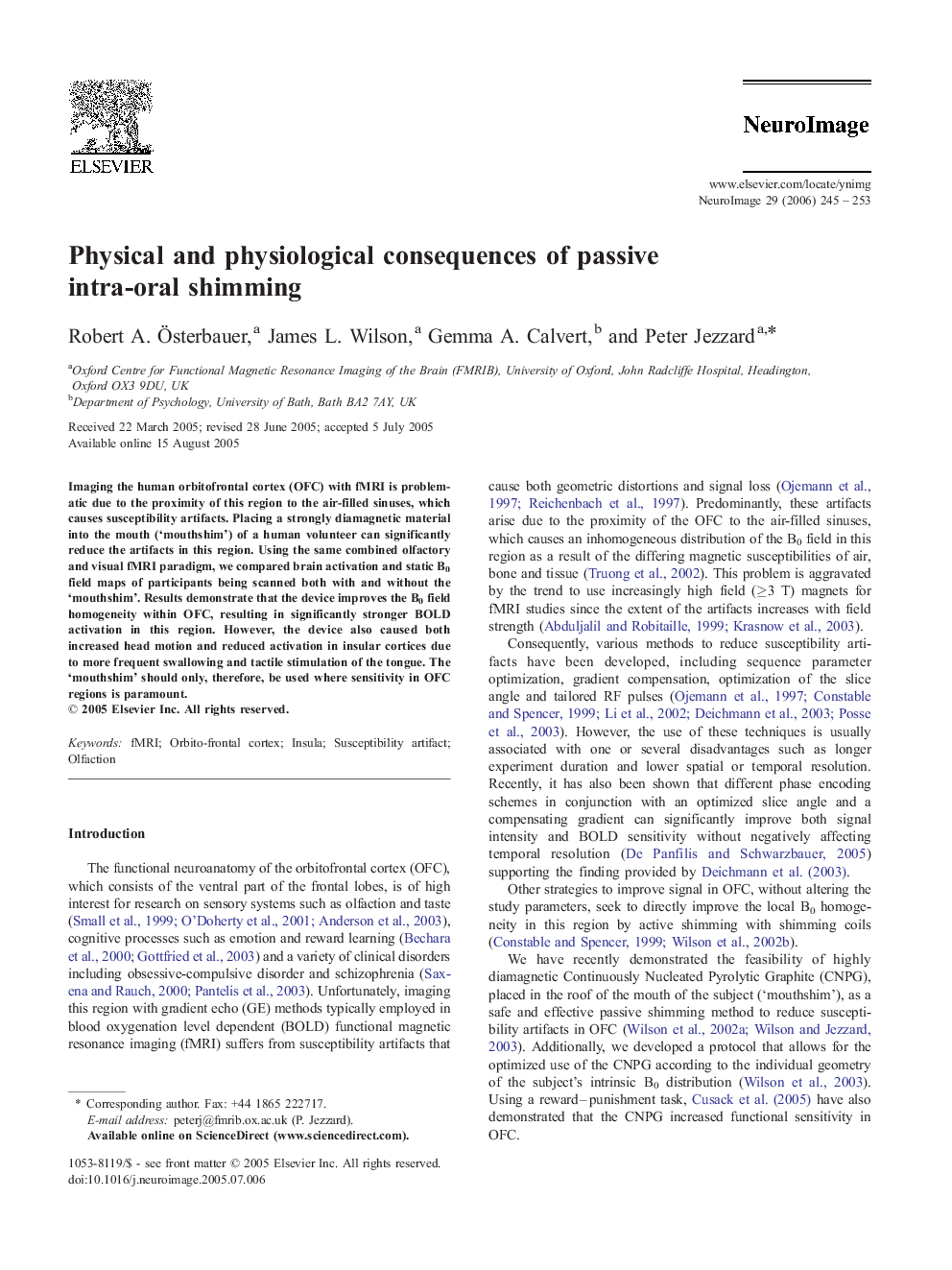| Article ID | Journal | Published Year | Pages | File Type |
|---|---|---|---|---|
| 3074610 | NeuroImage | 2006 | 9 Pages |
Imaging the human orbitofrontal cortex (OFC) with fMRI is problematic due to the proximity of this region to the air-filled sinuses, which causes susceptibility artifacts. Placing a strongly diamagnetic material into the mouth (‘mouthshim’) of a human volunteer can significantly reduce the artifacts in this region. Using the same combined olfactory and visual fMRI paradigm, we compared brain activation and static B0 field maps of participants being scanned both with and without the ‘mouthshim’. Results demonstrate that the device improves the B0 field homogeneity within OFC, resulting in significantly stronger BOLD activation in this region. However, the device also caused both increased head motion and reduced activation in insular cortices due to more frequent swallowing and tactile stimulation of the tongue. The ‘mouthshim’ should only, therefore, be used where sensitivity in OFC regions is paramount.
